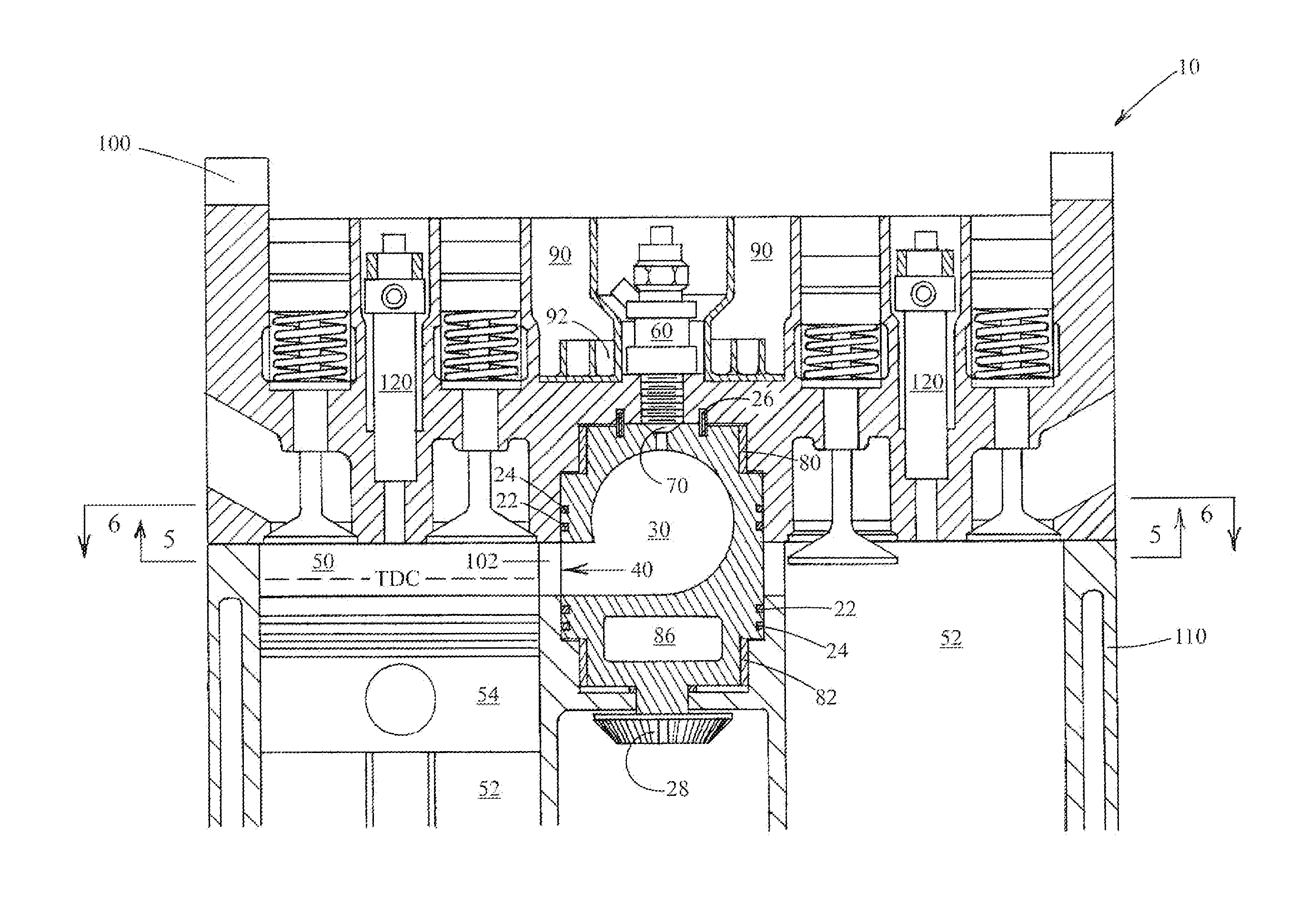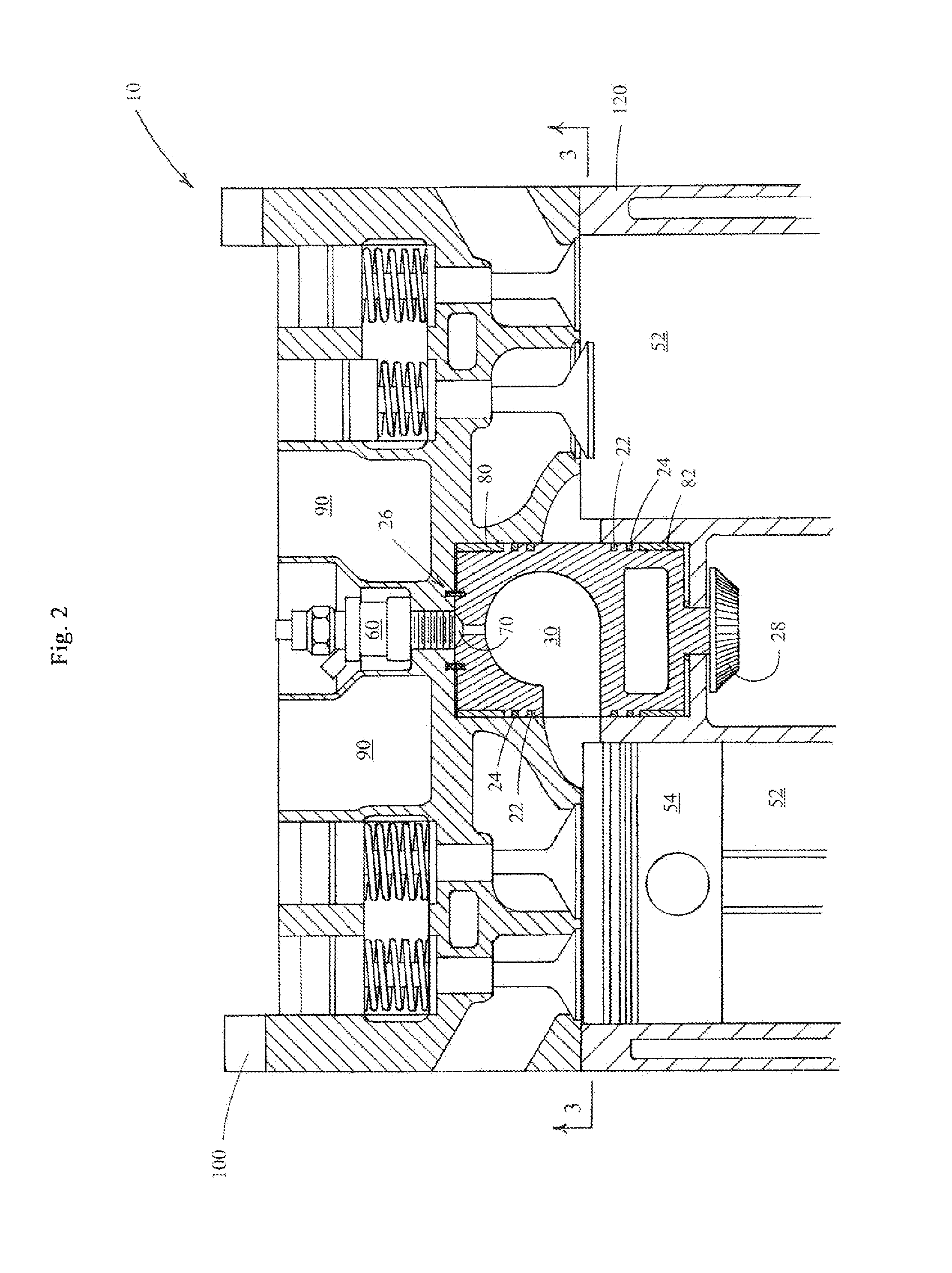Engine having a rotary combustion chamber
a combustion chamber and engine technology, applied in combustion engines, gas turbine plants, hot gas positive displacement engine plants, etc., can solve the problems of fuel cell transportation fuel, lack of infrastructure to dispense fuel and storage of hydrogen, and several major hurdles to overcome for fuel cells to achieve the effect of improving hydrogen combustion, avoiding the thermal efficiency penalty of idi engines, and reducing the operating thermal range of r
- Summary
- Abstract
- Description
- Claims
- Application Information
AI Technical Summary
Benefits of technology
Problems solved by technology
Method used
Image
Examples
Embodiment Construction
[0017]In order to better understand how the proposed engine would improve hydrogen combustion, the preferred embodiment is now described in more detail. The major novel element is the combustion system which includes a single centrally located rotary combustion chamber (RCC) 30 serving all four cylinders in a four stroke DOHC variable valve actuation (VVA) engine 10. The RCC assembly 20 contains a spherical combustion chamber 30 with a passage and opening. This opening, combustion valve 40, sequentially accesses the combustion chamber 50 of each cylinder 52 as it is driven at one half the crankshaft speed by gear 28. A fuel injector or combination fuel injector / spark plug (FISP) 60 injects fuel directly into RCC 30. A small pre-combustion chamber 70 is located next to FISP 60 collecting higher concentrations of fuel and is used to initiate combustion.
[0018]Conventional ring seals 22 located above and below combustion valve opening 40 on RCC assembly 20 contain combustion gas on one ...
PUM
 Login to View More
Login to View More Abstract
Description
Claims
Application Information
 Login to View More
Login to View More - R&D
- Intellectual Property
- Life Sciences
- Materials
- Tech Scout
- Unparalleled Data Quality
- Higher Quality Content
- 60% Fewer Hallucinations
Browse by: Latest US Patents, China's latest patents, Technical Efficacy Thesaurus, Application Domain, Technology Topic, Popular Technical Reports.
© 2025 PatSnap. All rights reserved.Legal|Privacy policy|Modern Slavery Act Transparency Statement|Sitemap|About US| Contact US: help@patsnap.com



